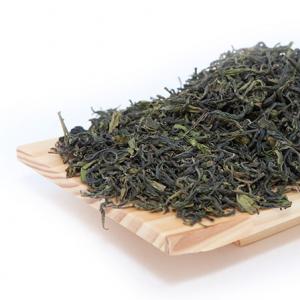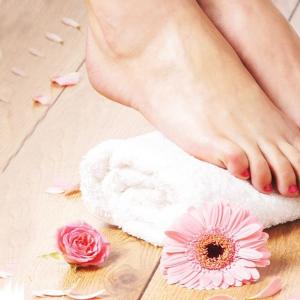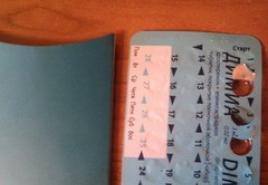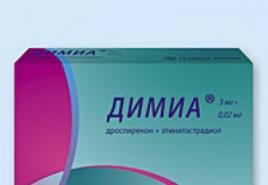Types of wallpaper - what are the types of wallpaper? The amazing story of creating wallpaper (14 photos) What is the wallpaper for the walls name
Hello))
Although it's not summer now - it's time for vacations, during which we usually all "love" to make repairs)) nevertheless, I want to talk about one of the types of decorating houses and apartments - wallpaper.
Wall decoration is one of the first things we think about when carrying out repairs and transforming our homes.
Today, wall decor can be very diverse and many, keeping up with the times, choose something new, progressive. Nevertheless, we have not stopped pasting the walls of apartments with wallpapers that have been familiar and proven over the years.
Wallpaper, like many years ago, is the leader among other decor, as it is the most convenient and affordable building material, in addition, a huge selection on store shelves pleases the eye with a variety of shades, not allowing you to pass by.
Despite the fact that they entered our lives relatively long ago, the question still arises: “what are the wallpapers for walls” periodically arises.
Its relevance is growing every day, along with the range of hardware stores. Having crossed the border of the Soviet period, when there were practically only paper wallpapers in stores, we learned that wall coverings can have different options, and sometimes those that can not only radically transform a room, but also create sound and heat insulation, and this is far from All.
Therefore, I propose to understand the most popular today and try to understand what is the best choice?
paper wallpaper
Paper wallpapers are one of the first that we learned about and were glad to decorate the walls with them, without really thinking about the shortcomings, there was nothing to compare with)) But in the era of the “choice problem”, everything changes and before you buy paper wallpapers, It doesn't hurt to take into account the pros and cons.
Types of paper wallpaper
They are divided into two subspecies - simplex and duplex.

Wallpaper simplex, what is it
These wall coverings are considered pioneers and therefore everyone who has made repairs at least once in his life has come across them in stores.
Simplex can be smooth and embossed, but their distinctive feature is that the paper base of the wallpaper consists of a single layer.
Once upon a time, many preferred simplex wallpaper because of their simplicity and affordable cost, but these pluses are not able to cover the minuses, which are expressed in fragility and poor concealment of flaws if they are on the walls.
Simplex is afraid of mechanical damage, and even more of fire and water, not for nothing that Europe has long abandoned the use of simplex wallpaper.
There is another subspecies of paper wall coverings:
Wallpaper duplex, what is it and how do they differ from simplex?
For the manufacture of duplex wallpapers, more sophisticated technologies were used, which made them stronger and more durable. They consist of two layers of paper, which means that the picture is printed on the top layer. This little trick creates the effect of a living drawing without deformation.
You should not completely discount the use of paper wallpapers, due to the fact that paper passes air well and the wallpapers “breathe”, they are the most environmentally friendly and it is with them that designers advise to paste over nurseries and bedrooms.
From my own experience, I’ll say that paper wallpapers are good for giving, unless, of course, a country interior without any special claims)) This is a very cheap option, it was not difficult for us to glue them, there are a huge number of “country” colors in the assortment, but, most importantly, they do not spoil the overall eco-friendly country atmosphere. Just keep in mind that paper wallpapers absorb odors more than others and fade in the sun, so do not use them on the sunny side.
Vinyl wallpaper - pros and cons
Vinyl wallpapers are quite popular, and it is precisely because of their popularity and variety that many questions arise, which version of vinyl is better to choose, what is the difference and where to look for the pros and cons. Vinyl wallpapers have their own characteristics, which you should learn about before proceeding with the repair.
Vinyl wall covering is made on a paper or non-woven base from polyvinyl chloride - PVC. Vinyl is durable, reliable and will not fade.

But! If the vinyl wallpaper tubes are not labeled with an eco-friendly icon, then it is better to leave them in the store.
There are several varieties of vinyl wallpaper.
Compact vinyl
What is it, compact vinyl wallpaper and how to visually distinguish them from others on the building materials market?
Compact vinyl, or hard vinyl, has a texture that mimics stone, plaster, ceramic tiles, etc.
This option is so unpretentious that brushes and detergents based on alkali and alcohol can be used to clean them.
Wallpaper silkscreen, what is it
It is not difficult to recognize them on the shelves of stores: they have a smooth surface similar to silk and a thin but dense structure resulting from heating and embossing.

Smooth vinyl, better known as silkscreen, adds a touch of charm and grace to walls.
Walls for gluing "silk" require special preparation, they must be perfectly even, the impeccable texture of this type of wallpaper will reveal even small flaws.
Washable vinyl wallpaper
But they, unlike silk-screen printing, are heavy and smooth out uneven walls well.
From the name it is clear that the wallpaper has increased moisture resistance, so it can decorate not only the kitchen, but also the bathroom.
Foamed vinyl, what is it
The next type of vinyl wallpaper is foamed vinyl, this is a wallpaper that is much thicker than, for example, silk-screen printing. Pleasant to the touch, soft, with a rough, textured surface, sometimes decorated with sparkles, foamed vinyl is a kind of relief plaster and perfectly hides any unevenness or wall defects.
The disadvantages of foamed vinyl include instability to external influences: it does not tolerate too close proximity to the backs of beds and chairs, and is unstable to external influences, for example, to cat claws.
Non-woven wallpaper - pros and cons
Non-woven wallpaper is a velvety innovation that has replaced paper wall coverings. It is not in vain that they won the respect of customers and popularity, since if you take into account the pros and cons of non-woven wallpaper, then there will be much more pluses.

Pros.
Since they are made of cellulose and synthetic fibers, they easily pass steam and moisture and the walls can "breathe".
They are durable, can reinforce small cracks and even contribute to some degree of sound insulation.
They should pay attention to those who make repairs in a new building.
Non-woven wallpaper does not stretch and practically does not burst when the house shrinks.
Minuses.
The disadvantages of these wallpapers appear when a layer of vinyl is applied to the non-woven base, and although the non-woven fabric in this case becomes much stronger, it loses its environmental benefits. Most often, this option is used for painting.

Wallpaper is clothing for the walls in which we live our lives, and each of us is concerned about our own health and our loved ones, so the question: is non-woven wallpaper harmful or not, has its relevance. The answer in this case is ambiguous, since it all depends on the manufacturer. High-quality and real non-woven wallpaper cannot be harmful, due to the lack of artificial substitutes.
In turn, if, as already written, vinyl coating is applied to the top layer, and there is no security icon on the tube, then we can say that non-woven wallpaper is harmful. Although, if you look, we are no longer talking about 100% non-woven fabric.
Which wallpaper is better vinyl or non-woven or paper
From the foregoing, we can draw an unambiguous conclusion - it all depends on where you need to glue the wallpaper and what operating requirements you impose on them.
For rooms where we spend less time, and the wall covering is preferably wear-resistant (corridor, bathroom, kitchen), vinyl wallpaper is suitable.
But despite the significant advantages, all vinyl wallpapers have the same disadvantages: synthetic material, lack of breathability and a pronounced smell, which, however, disappears over time. Therefore, when wondering which wallpapers are safe for health, think about something more natural: paper or non-woven, and prefer them for children's rooms and bedrooms.
Other types of wallpaper
Textile wallpaper, what is it?
If you are looking for a beautiful and natural wall covering, then textile (fabric) wallpaper is exactly what you need. They can be: viscose, linen, cotton, silk, velor, felt and jute.

For the production of such wallpapers, natural threads are used, which are glued to a non-woven or paper base, and on top they are treated with antistatic agents and compounds that resist fading, dust settling, and wetting.
In addition to eco-friendly material, they also have a very attractive appearance: a variety of colors, shapes and textures.
Fabric wallpaper, pros and cons
The advantages of fabric wallpapers are undoubtedly a lot, they can have all of the above qualities. And the downside can be the price, which naturally will be an order of magnitude higher than that of non-natural counterparts.
Eco wallpaper for walls
Today, much attention is paid to natural products and materials, so many prefer eco-coatings, wallpapers made from natural environmental substances.
The basis of eco-wallpaper is non-woven or very thick paper. The wallpaper itself is heavy, because it is made from plant materials such as: bamboo, reed, algae, rattan, sisal, racial paper, veneer of valuable tree species: cherry, sandalwood, apricot and has unambiguous advantages – natural components, breathable structure, sound absorption.

Cons - they lose color over time, and from frequent wet cleaning they can become deformed.
Cork wallpapers are very popular now, the pros and cons of which boil down to the fact that they are made of cork oak, cork chips, they are very beautiful. They have an undeniable advantage - the natural wax coating significantly adds strength to them.
But they also do not like frequent wet cleaning, so cork wallpaper should not be used in the kitchen and bathroom.
fiberglass wallpaper
A wall covering that differs from the usual wallpaper in our understanding. In appearance, they look like a fabric with glass fibers, a kind of textured decorative weaving, and applied to the walls make them look like strict plaster.
Pros.
Fiberglass wallpaper is so durable that it will last at least 30 years!
The strength is explained by the composition of fiberglass: threads are drawn from dolomite, quartz sand, lime at a huge temperature of 1200 degrees and “yarn is made”. Since the components of the wallpaper are exclusively natural, there are no harmful chemicals in their composition.

Fiberglass wallpapers have great wear resistance - they do not scratch, do not tear, they can withstand washing with a stiff brush and do not even burn.
When stained, they can withstand up to 20 layers of waterproof paint.
Minuses.
Naturally, when acquiring such an unusual wall covering, the question arises, how to glue fiberglass wallpaper? This process is very complex and rather time-consuming, requiring special knowledge and skills, so it is better if professionals deal with it.
Metallized wallpaper, what is it?
Another new buzzword, or a real breakthrough in wall decoration? In fact, metallized wallpapers differ in their external gloss, but if you drop deeper, you can understand that the same interlining or paper is taken as the basis.
On the other hand, aluminum foil framing the front layer of the material adds an unusual, one might even say luxurious look to them, as well as their moisture resistance and reflection of electromagnetic radiation, can be considered an undoubted plus and quality indicator.

Given such a huge range of wallpapers, you might think that it is easy to get confused in all this variety, but you should not be afraid, because the manufacturers took care of us, the buyers, and put signs on the wallpaper, the meaning of which is easy to decipher.
What do the icons on the wallpaper mean and how to decipher the marking symbols
Since different wallpapers can be marked differently, look at several options for decoding marking symbols.



Beauty and bright mood for your home 🙂
Gone are the days when repairs were completed by sticking paper wallpapers, which did not please with a variety of patterns and workmanship. But the choice was small, and it was far from always possible to “get” decent wall coverings.
Today, any specialized store is the kingdom of a variety of colors, textures, patterns and materials from which they are made. But now another problem arises: how not to drown in the "wallpaper" sea and choose exactly those that will not only decorate your home, but will be durable, easy to care for and inexpensive.
Wallpaper is very often used for wall decoration.
What wallpapers are there, where is it better to use them?
To choose the most suitable products, you first need to decide:
- in which room, in terms of functionality, they will be pasted;
- will it be necessary to completely paste over the walls, ceiling, or will they be used fragmentarily;
- is it important that they are washable;
- what should be the price.
If understanding is reached in these matters, it is possible to consider the products in more detail, paying attention to the following features:
- material;
- gluing methods;
- color and texture;
- applied ornament.
1. The choice of material will depend on where they are supposed to be glued. In the bathroom, kitchen, hallway, vinyl wallpapers that “accept” wet care are more appropriate. Not so long ago, a type of wall covering appeared with the addition of an antibacterial composition, which helps protect walls from fungus in the kitchen or bathroom.
 Wallpaper material should be chosen based on the place of their gluing
Wallpaper material should be chosen based on the place of their gluing Fabric is a more difficult material to care for, it is also not easy to stick them on, as constant stretching is required. However, the "torments of creativity" will pay off a hundredfold: it is perfect for bedrooms or living rooms, it will create a special atmosphere of warmth and comfort.
You can also use traditional paper wallpapers, which conquer the colors of colors. They have not lost their relevance today: they are strong enough and do not present any difficulty in gluing. Successfully selected, they will decorate the dining room and living room, bedroom and office.
Interesting embossed wallpaper, which creates the effect of velvet and allows for careful wet cleaning. They need to be cleaned before sticking.
 Embossed wallpaper creates a velvet effect and can be gently wet cleaned
Embossed wallpaper creates a velvet effect and can be gently wet cleaned There are other types of wall coverings made from rare and sometimes exotic materials.
2. Sticking methods
Today there are wallpapers that can be pasted in one of three ways:
- buy material with adhesive impregnation;
- glue in the traditional way;
- use self-adhesive wallpaper.
3. Color and texture
To create comfort and coziness in the house, using interesting design solutions, the right choice of color will help. It is good if it is in harmony with the furniture, taking into account the size and illumination of the room.
Wallpaper can be plain-colored and with a variety of patterns. When choosing an ornament, you must consider:
- the size of the room and its relationship with the size of the ornament;
- illumination by daylight;
- functional purpose of the room.
 Wallpaper can be plain-colored and with a variety of patterns.
Wallpaper can be plain-colored and with a variety of patterns. Classification by characteristics
Not only the beauty of the room depends on the right choice of wallpaper, but also the mood and comfort of those who live or work in it. At the moment they are classified according to the following parameters.
- Attitude towards wet care
Ordinary (paper) or acrylic ones require especially careful handling: they are best cleaned with a vacuum cleaner with a soft nozzle.
Waterproof cleaning with a wet cloth or sponge.
Washables can be maintained with soft brushes and soapy water.
Super washable withstand light rubbing; these include vinyl coverings.
Burn-out resistance
To what extent the selected wallpaper has this property, the icon on the package will show. When buying, you need to consider: if the room is sunny throughout the day, the burnout process will be very active, so durability in color loss from exposure to the sun will be an important condition for long-term use of products.
Possibility of customizing the pattern
Not all types of wallpaper require this, but it is important to pay attention to this characteristic, otherwise more material will be required than is required for gluing.
 Not only the beauty of the room, but also the mood and comfort depend on the right choice of wallpaper.
Not only the beauty of the room, but also the mood and comfort depend on the right choice of wallpaper. Another characteristic is the material, while its choice is quite wide.
Coating type | Peculiarities |
|
Paper | The cheapest environmentally friendly afraid of moisture have low strength |
|
non-woven | Nonwovens | Good air and moisture conductivity different levels of density |
Acrylic | Acrylic Foam Coated Paper | "Breathable" various colors somewhat heavier than paper, but lighter than vinyl sticking method - traditional |
Textile | Paper with glued fabric | different texture Used natural and artificial textiles |
Glass fiber | Used in rooms with high humidity can be painted and repainted many times serve up to 30 years; |
There are other, more rare and exotic types of wall coverings made from natural fabrics.
 There are other, more rare and exotic types of wall coverings made from natural fabrics.
There are other, more rare and exotic types of wall coverings made from natural fabrics. Decorative wallpaper: basic selection options
Decorativeness - this is the indicator that plays an important role in the selection of material. Its main indicators are:
- wallpaper color;
- drawing;
- texture (relief, three-dimensional ornament, etc.);
- functionality (where it is used: for pasting walls, ceilings, individual fragments of the room).
If they are correctly selected and matched, it is possible to realize the most daring design ideas, giving the room an original unique look and creating an atmosphere of coziness and comfort in it.
Acrylic wallpaper: beauty and durability
This type of wall covering is quite durable, so it will serve for quite a long time. In addition, a variety of colors allows you to use acrylic for decorating rooms of various sizes, lighting, functionality. The wallpaper uses a foamed acrylic component, which is applied to a paper base.
Among the undeniable advantages are:
- breathability of the material;
- the ability to hide surface irregularities;
- variety of colors and patterns;
- the ability to use in the implementation of various design solutions;
- relatively low price.
The disadvantages include:
- short service life (within 5-6 years);
- low strength;
- high labor intensity of gluing, in comparison with paper;
- lack of versatility.
Acrylic wallpapers are distinguished by high aesthetics, bringing freshness, beauty, and novelty to the design.
 This type of wall covering is quite durable, so it will serve for quite a long time.
This type of wall covering is quite durable, so it will serve for quite a long time. What is the difference between acrylic wallpaper and paper
Paper and acrylic wallpapers have quite a lot in common. Both types are environmentally friendly, "breathable", they are characterized by a variety of colors and patterns, and they are also united by the traditional method of gluing and the "dry" method of care. This is where the “commonality” of these types of wall coverings ends.
Acrylic material differs from paper:
- its foam coating allows you to hide small surface irregularities, which is not possible with paper wallpaper;
- significantly longer time spent on pasting: this type of wall covering requires careful handling, as it is heavier than paper;
- their cost is somewhat higher.
They are in demand, but if there is not much experience in installation, it is better to invite a specialist to stick them.
 Acrylic and paper wallpapers are very similar
Acrylic and paper wallpapers are very similar non-woven
This type of wallpaper, having appeared on the market, immediately found its fans and very quickly gained popularity. There are several reasons for this:
- based on non-woven material, they have increased strength and density;
- are environmentally friendly;
- do not shrink and do not stretch, as they do not get wet;
- practically not subject to fading;
- have sufficient thickness to hide surface irregularities, which frees from putty before gluing;
- fire resistant.
The main disadvantages, which are few, are:
- a certain difficulty in care, since dust is poorly removed from the reliefs;
- the relief structure can be easily damaged by careless handling of piercing and cutting objects.
 This type of wallpaper, having appeared on the market, immediately gained its fans and quickly gained popularity.
This type of wallpaper, having appeared on the market, immediately gained its fans and quickly gained popularity. Wall mural
This is an interesting and low-labor way of solving design in various styles; their range is truly limitless. Production of photowall-paper to order is possible. Their use makes it possible:
- "revive" the interior with pictures of nature;
- arrange them as a perspective observed from a false window;
- order a company logo or depict new products.
They also have advantages during installation:
- sticking is very fast;
- the colors in the images do not lose their brightness for a long time;
- you can independently choose the method of installation: self-adhesive or using glue.
The disadvantage, but rather a prerequisite, is the requirement for an absolutely smooth surface, otherwise the effect of naturalness disappears. Inexpensive material can peel off over time, so it makes sense to take a more expensive one - it will be less trouble with it.
 Photo wallpaper can be made to order according to your design
Photo wallpaper can be made to order according to your design Liquid wallpaper
This unusual material combines the properties of wallpaper and decorative plaster, which allows you to add various components to the composition of the dry mixture: mink, mica, mother-of-pearl and other materials.
They include:
- cellulose;
- cotton fibers;
- silk;
- glue,
The advantages of this type of material are:
- environmental friendliness and hypoallergenicity;
- breathability;
- high aesthetics;
- simplicity and convenience of application: it does not form seams and joints, it can be applied in several stages;
- ease of care: washing is not difficult.
The material is not combustible, has high heat-saving and sound-proof characteristics.
As for the minuses, the main one is the high price. In addition, such wallpapers dry for a long time: in some cases, the drying time can reach a week, and on average from 12 to 36 hours, and are easily damaged: they show scratches, chips, etc.
 The material is not combustible, has high heat-saving and sound-proof characteristics
The material is not combustible, has high heat-saving and sound-proof characteristics Rare and exotic finishes
In addition to the well-known types of wallpaper, there are rare and unusual ones. This group is represented by:
- wallpapers made from dry Japanese grass and bamboo are original, fashionable, but can be short-lived in homes where there are curious small children and pets;
- natural leather, which are harmless to health, have high sound insulation, demonstrate luxury and prosperity;
- metal, created using modern unique technology, creating unusual interiors
- wood, giving the interior sophistication and chic.
All these are natural and safe materials, expensive and creating the same expensive and luxurious interior.
 Wallpaper from dry Japanese grass and bamboo - original, fashionable, but may be short-lived
Wallpaper from dry Japanese grass and bamboo - original, fashionable, but may be short-lived What do the icons on the wallpaper mean and how to decipher the marking symbols
To find out about the properties and features of the consumer characteristics of the purchased wallpaper, you can ask questions to the sales assistant. And you can find out about them yourself by “reading” all the information on the icons and marking symbols placed on the package. The correct "reading" gives information that the wallpaper:
 Usually there are icons on the wallpaper that indicate their characteristics.
Usually there are icons on the wallpaper that indicate their characteristics. - waterproof,
- washable,
- super washable,
- wear-resistant,
- lightfast,
- very lightfast
- completely removable,
- not completely removed
- self-adhesive
This knowledge will help you choose the “right” wallpaper that will decorate the room for many years.
Video: What are the wallpapers
Video: Wallpaper selection
Wallpaper used for interior decoration also has its own amazing history. There is evidence that wallpapers were first used in the 2nd century BC. e. in China. They were far from the wallpaper that we now have in rolls. The oldest examples were hand-painted and were large pieces of paper. 
The first printed wallpapers date back to 1509. They were made in England, but were also still "lumpy", not rolled. The year 1675 marked the beginning of the manufacture of wooden printing plates, which, thanks to repeating patterns, significantly accelerated the process of drawing a picture. 
Along with paper wallpaper in France in the 17th-18th centuries, fabric, silk-imitating finishing materials were popular. Moisture resistant wallpaper is also an old invention. It was patented back in 1858. 
In America, the beginning of the use of wallpaper falls on 1739. And in 1778, Louis XVI issued a decree that the length of a roll of wallpaper should be approximately 34 feet (10.4 m). And only in 1799 a machine was invented that allows you to get rolls of paper wallpaper. The release was arranged far from immediately. Only about half a century later did a roll appear in France, and the drawing was applied already in a typographical way. Perhaps only they can be considered the first wallpaper. 
In Russia, wallpaper began to be used in the first half of the 19th century. The first factory was built near St. Petersburg. Currently, we are seeing an abundance of different types of wallpaper, but paper wallpapers have not lost their relevance. 
But the first fashionable wave of wallpaper came to our country about twenty years ago. Such "improved" wallpapers won the hearts and homes of many residents of cities and towns. Digital abundance did not yet exist, so the choice of images for photo wallpapers was very small. Today the situation has changed radically - a lot of smart specialists have appeared who are able to create a certain image on the wall for a specific person. Wall murals surprisingly fit into any interior, women mostly choose photo wallpapers with flowers. 
In the middle of the 19th century, the French artist and lithographer Jules Cheret became one of the founders of poster art, printing art, the creator of a distant ancestor of modern photo wallpapers ... Cheret had his own lithographic workshop and throughout his life created at least one and a half thousand posters and posters for theater platforms, circus venues and cafe. We will correctly highlight the name of another person, the French aristocrat and artist Henri Lautrec. Both were graphic artists and decorators and had a beneficial effect on each other's work. Shere proposed a prototype of a modern poster, becoming the first to sign his works. It was he who determined the basic principles of successful advertising on the poster. This state of affairs lasted until the second half of the 19th century. The subsequent development of printing on large-format paper canvases reached the level of a real art, especially after the Count of Toulouse-Lautrec added rich, catchy colors to lithographs. Thanks to these people, today we enjoy high-contrast large-format images. yellow rose on the wall 
Historical facts. Numerous attempts
Long before Jules Cheret and Count Lautrec, another French miniaturist, Jean Bourdichon, painted 50 rolls of paper. He painted angels on the blue wallpaper. This work was used to decorate the residence of King Louis XI. Soon, elite houses in aristocratic circles began to be decorated in this way. This episode in history gave birth to either a fresco or photo wallpaper ...! In the mid-18th century, Philadelphia printer Fleason Plunkett conducted a small experiment. With the help of wooden blanks, he applied a pattern to paper canvases, and then painted it by hand. So there was another attempt, and, probably, quite successful, to invent paper wall decor. 
Many people know that modern photo wallpapers have water-repellent properties. For the first time, wallpaper was “endowed” with such a feature after the Second World War. Technology made it possible to produce more durable wallpaper patterns that could be gently wiped with a damp sponge. This has significantly advanced the new type of wallpaper into the consumer decorative coatings market. picture of Venice on the wall in the dining room 
Today, photo wallpapers have again become fashionable and popular. Long gone are the days when prints on photo wallpapers were boring and monotonous. Production technologies have changed for the better and now many lovers of picturesque images have a real opportunity to update their home with high-quality and realistic photo wallpapers.
History and origins
Until the 18th century, fabric wallpapers were used in Europe, they were nailed to walls and ceilings, from where the given name came from.
| Construction Materials | |
|---|---|
| Structural | |
| Roofing | |
| Finishing | |
| Facing | |
| Natural | |
Wikimedia Foundation. 2010 .
Synonyms:See what "Wallpaper" is in other dictionaries:
Wallpapers - get a valid OBI promo code at Academician or buy profitable wallpapers at a discount on sale at OBI
WALLPAPER- roll paper, patterned or plain, for pasting walls (sometimes ceilings) in rooms. About 40 types of wallpaper are produced in the USSR. Each type of wallpaper corresponds to a certain type of paper. There are primed and non-primed wallpapers. ... ... The Concise Encyclopedia of the Household
Wallpaper- - rolled wall covering, made on paper and intended for gluing on walls and ceilings. Note. Paper is used as the carrier material. It is also possible to use nonwovens as a carrier material ... ... Encyclopedia of terms, definitions and explanations of building materials
WALLPAPER. The word wallpaper already by the meaning of its material part shows that it was originally applied to fabrics or skins, which were upholstered from the inside of the walls of the dwelling. Our use of this word would be more in line with the name of the oklea. Kostomarov ... History of words
WALLPAPER- serve to decorate and decorate the interior walls of dwellings. O. penetrated into Europe from China; The first wallpaper factories appeared in England in the 18th century. The production of O. is mainly the production of paper (see Paper production), which then ... ... Big Medical Encyclopedia
WALLPAPER, rolled material for interior decoration. Paper wallpaper is a traditional finishing material in East Asia (Japan, China); in Europe before the 18th century. fabric (damask) wallpapers were used, which were upholstered (hence the name of the wallpaper) ... ... Modern Encyclopedia
Wallpaper- WALLPAPER, rolled material for interior decoration. Paper wallpaper is a traditional finishing material in East Asia (Japan, China); in Europe before the 18th century. fabric (damask) wallpaper was used, which was upholstered (hence the name “wallpaper”) ... ... Illustrated Encyclopedic Dictionary
Roll material for interior decoration. Paper wallpaper is a traditional finishing material in Eastern countries. Asia (Japan, China); in Europe before the 18th century. fabric (damask) wallpaper was used, which was used to upholster the walls and ceilings of the premises. IN… … Big Encyclopedic Dictionary
Explanatory Dictionary of Ushakov
1. WALLPAPER1, wallpaper, unit No. Material in the form of wide strips, preim. paper with a pattern, sometimes fabric, for upholstery or pasting walls in living quarters. "Damask wallpaper in the living room." Pushkin. 2. WALLPAPER2, both, places. (simple). not right. instead of both. Explanatory ... ... Explanatory Dictionary of Ushakov
Tapestries Dictionary of Russian synonyms. wallpapers n., number of synonyms: 5 auto-wallpapers (1) foam-wallpapers ... Synonym dictionary
Traditional and widely known finishing material. In the modern definition, wallpaper is a rolled material, usually on a paper basis, which is attached to the surface of the walls with glue.
Wallpaper is a significant part of the interior, they give a finished look to the design or can themselves be the main highlight of the room. A huge number of canvases with different performance properties, different designs make you get confused in the choice. Therefore, when buying, first of all, you should be interested in quality characteristics, and not just in the appearance of the paintings.
Wallpaper classification
Unfortunately, not all sellers are conscientious, and may not know or not tell about the properties of the material. It is better to study the types of wallpaper before visiting the store in order to know their characteristics and your requirements for them. This will make it easier to make choices and engage in dialogue.
Types of wallpaper
We list the types of wallpaper depending on the material of manufacture and present their photos:

The most expensive and natural - textile. They are chosen in the hall or in the bedroom, they are not suitable for the corridor and the kitchen, as the material collects dust well and requires careful care. Because of this, they are not recommended for allergy sufferers.

Glass fabrics- the most durable. Can be used for walls and ceilings. The texture allows you to hide the structure of uneven surfaces. Can be re-dyed up to 10 times with texture retention. An important requirement is that the coating paint must match the characteristics of the wallpaper, otherwise the purchase of high-quality material will be useless. The same applies to glue: fiberglass wallpapers are heavy, they need special glue.

Non-woven wallpaper- another type of coating for both walls and ceilings. They are lighter than fiberglass, but are painted no more than two times. To preserve the pattern, they require staining with latex paint with good hiding power. Such wallpapers are soft, easily scratched, therefore they are more often used for the ceiling, the texture of the paintings hides irregularities. It is very convenient for work that the glue is applied to the ceiling, and not to the canvas.
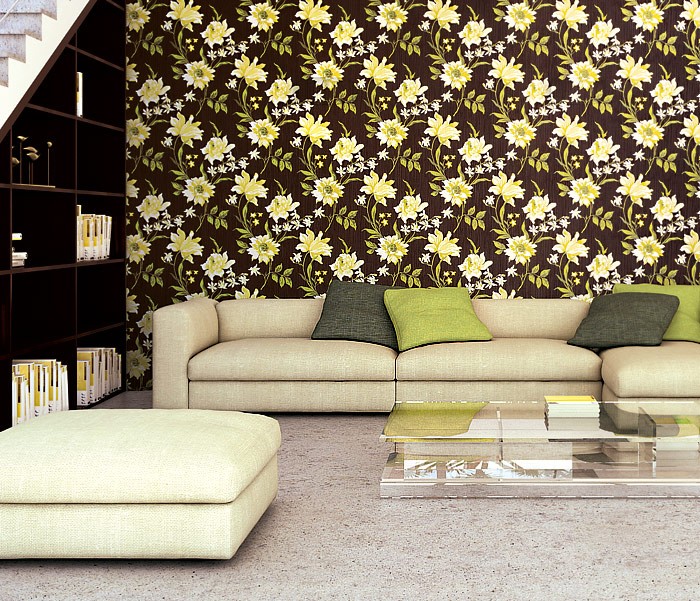
Vinyl wallpaper, depending on the manufacturing technology, are foamed and pressed. Foamed - have a convex volumetric texture, they seem very warm and cozy. The versatile design allows it to be used in all areas, but the wear resistance characteristics warn that such a material does not tolerate washing with aggressive detergents and brushes. And the pressed analogue creates the effect of silk-screen printing, is not afraid of washing and scratching - the cost of such wallpapers is much higher, but they will also last longer.

Paper wallpapers are chosen for bedrooms and children's rooms, they are painted with safe paints and do not emit toxic substances. They can be wiped with a damp cloth, but do not withstand aggressive washing. The price is comparable to vinyl wallpaper made by embossing. Visually, they are easy to distinguish due to the large volume of the roll, the paper base is not so flexible and does not allow to keep the shape.

Liquid wallpaper - based on gypsum plaster and polymers. Sold in dry form, require dilution with water. Safe and durable, create additional heat and sound insulation. A mass of coarse grit can be applied to an uneven surface even by non-professionals. This will create a unique pattern.

Professionals are able to create real masterpieces with it.

stereoscopic canvases
According to the visual effect, wallpapers can be ordinary and 3D stereoscopic. Normal - all of the above. Stereoscopic canvases are the most modern type of material for walls. The drawing on them is applied in such a way that a complete feeling of the presence of the image is created. Especially relevant is the use of such material in small rooms, to create additional space. When choosing, it should be borne in mind that the image must be viewed from a distance of 1.5 meters.
"Windows", "doors" and "balconies" are suitable for small kitchens, bedrooms. An example of correct use in the photo.

Wallpaper depicting large flowers and animals - for large loggias, halls.

How to choose wallpaper
By appointment
The choice of wall and ceiling covering depends on their purpose: for which room, for which surface they are suitable.
For the ceiling, non-woven and fiberglass wallpapers are ideal. In a new house that has not settled yet, it is better to use the second option, it is more durable and able to maintain a flat surface even if a crack occurs. For the same reason, fiberglass wallpapers are popular for pasting walls in new buildings. Proper use of colors and other design solutions will make the interior original and boring.

Non-woven wallpaper for the ceiling is a good option when updating the finish of an already settled home. In this case, the overpayment for the material is useless, such wallpapers will cope with the task of leveling and decorating the surface. The material is also suitable for pre-sale cosmetic repairs. The cost of a 25 m roll of such wallpaper is comparable to the price of a 10 m roll of ordinary wallpaper.
Textile wallpapers are chosen if you wish to emphasize your status. They are pleasant to the touch and create a special atmosphere of coziness and comfort. Such a choice is not always appropriate, visually the difference between embossed vinyl and natural textiles is insignificant, but the difference in price is huge.

Paper rolls are created for allergy sufferers and just connoisseurs of their health. Although certificates and other types of wallpaper speak of their safety when used in residential areas.

Vinyl wallpaper - the most common and versatile. Suitable for all types of rooms, even for bathrooms.
By room size
Depending on the size of the room, the color and pattern of the wallpaper is selected. For a small room, it is impractical to use bright colors and contrasting patterns, such a design will make the room even smaller. But the right use of color can be beneficial and create a sense of comfort in a miniature bedroom, an example in the photo.

The combination of a yellow background and white interior items creates a feeling of sunlight and airy space. The absence of a pattern on the wallpaper and the matching floor create a coherent image and remove unnecessary boundaries of space.
By design
Having decided on the style of the room and furniture, you can proceed to the choice of wallpaper. Country-style interior design calls for walls with simple colors, lack of glamor and pretentiousness. So it turns out a room of romance, as in the photo.

Classic and modern minimalist styles are compatible with plain wallpaper. The photo shows an example of using bright walls in a large room. The lack of pattern and lines on the wallpaper and the floor is replaced by the shape of the furniture and lamps. The interior is original and boring.

Bold creative modern designs are highlighted by the original geometric wallpaper. A minimum of furniture and a “clean” floor create the free space necessary for a comfortable stay in the room.

How to choose wallpaper glue
The choice of wallpaper glue is an important point in the repair. You should not save on this material, it must correspond to the labeling of the wallpaper. The packages have compatibility data, each type of canvas has its own glue.
When preparing the solution, there is a possibility of an error in the calculations, so it is convenient to use ready-made formulations. Especially important is the use of such mixtures when pasting walls and ceilings with heavy wallpaper. The finished glue retains its properties longer and there is no need to prepare more and more new portions.
Borders are a special category of wallpaper; special glue has also been created for them. It is thicker and has greater adhesion, this is required by the specifics of the decorative element. Borders are subject to frequent tactile impact, thin strips tend to return to the rolled form and are poorly straightened. The use of special glue will exclude the possibility of self-peeling decor.
Photo of modern wallpaper

Modern fashion trends allow you to use any fantasy in design. The types of wallpapers are so diverse that you can create the interior of any dream. And if you can’t find a suitable drawing, draw it on glass fabric or non-woven fabrics, turn to design masters.
The craving for bright colors, for nature in the interior perfectly fills the green color. It is worth noting that it is the most beneficial effect on the well-being of a person. Psychologists believe that by surrounding yourself with green shades, you can become more balanced, more attentive, calmer.

The borders on the walls, it would seem, are outdated, but new canvases are being created with their imitation. They look great in a classic design, especially well suited for spacious corridors, as in the photo.

The use of light walls in the interior will allow you to change the design and mood of the room with the help of decorative elements and accessories. This canvas is a great backdrop for any ideas.

Japanese style in the interior is relevant. To create it, you need bamboo trunks or their imitation, walls of calm gray, beige, green tones.

A luxurious interior for lovers of gold and silver is created with the help of matching walls.

Green cuisine is a fashion trend of our time. This is especially true for nature lovers. A corner of greenery in the kitchen is the dream of most housewives.

If it is not realized in reality, then you can create a visual effect that will please no less. After all, he does not need careful daily care.

A variety of finishing materials on the market allows you to choose the perfect option for each case. The choice is always individual and depends on many factors. For an adequate solution, you first need to study all types of wallpaper for walls and ceilings.

